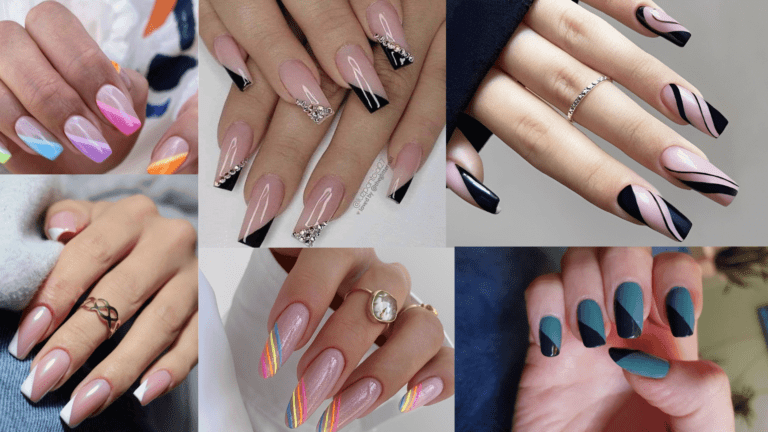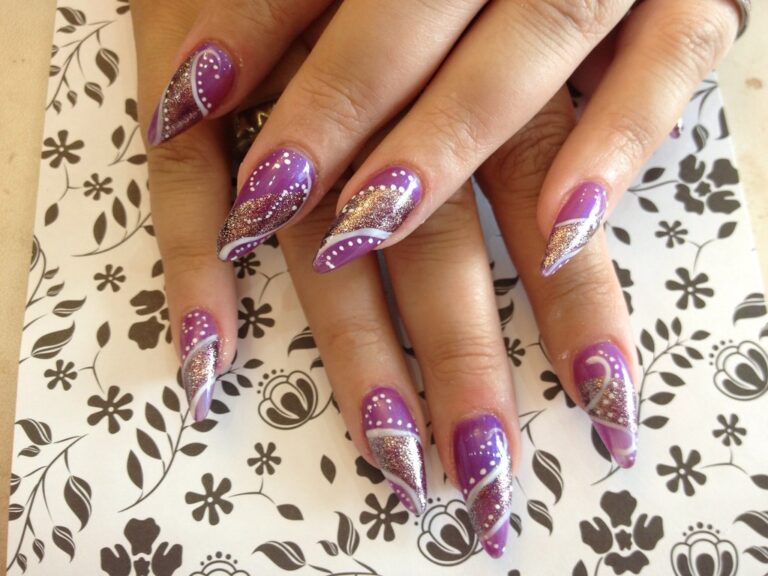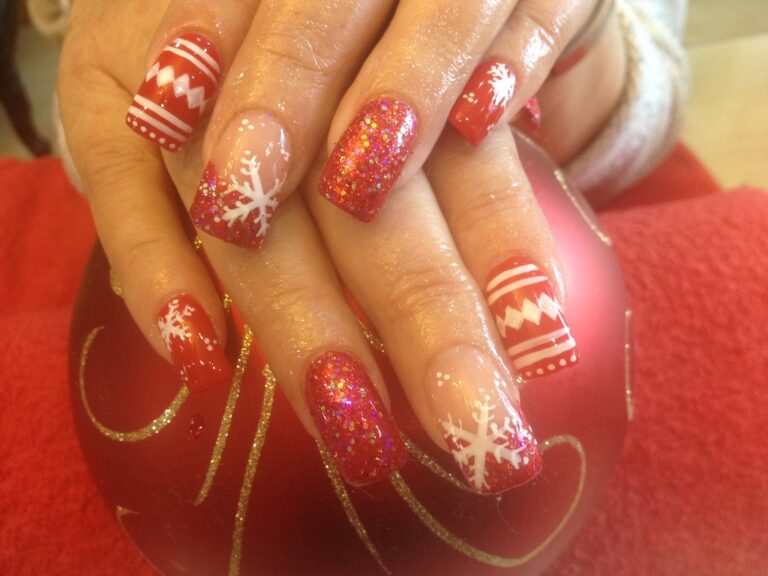“Blue or Not Blue: The Mystery of Turning Nails Blue”
The phenomenon of nails turning blue has puzzled scientists and intrigued historians for centuries. This article explores the science behind this mysterious color transformation, delves into historical cases of blue nails, and examines modern applications of this intriguing phenomenon.
Key Takeaways
- Understanding the chemical reaction that causes nails to turn blue is crucial in unraveling the mystery behind this phenomenon.
- Various factors such as environmental conditions and chemical exposure can influence the color change in nails.
- Historical cases of blue nails reveal intriguing stories and cultural beliefs associated with this phenomenon.
- The industrial uses of blue nails extend beyond aesthetics and have practical applications in certain manufacturing processes.
- The medical implications of blue nails provide valuable insights into potential health conditions and diagnostic indicators.
The Science Behind Nails Turning Blue

Understanding the Chemical Reaction
The phenomenon of nails turning blue can often be traced back to a chemical reaction that occurs within the nail material itself or as a result of external factors. This reaction typically involves the interaction of certain compounds that, when exposed to specific conditions, alter the nail’s pigmentation.
Factors such as temperature, pH levels, and exposure to chemicals can all influence this color change. For instance, the application of nail polish, particularly those containing complex polymers, can lead to a blue hue when subjected to UV light during the curing process.
- Temperature: Cold temperatures can cause a reduction in blood circulation, leading to a blue discoloration.
- pH Levels: Alkaline or acidic environments can affect the coloration of the nail bed.
- Chemical Exposure: Certain chemicals, when in contact with nails, can induce a blue tint.
Tip: To prevent unwanted color changes, it’s advisable to understand the composition of nail care products and how they interact with your nails.
Factors Affecting the Color Change
The discoloration of nails to a blue hue can be influenced by a variety of factors. Temperature is a primary factor; cold environments can cause blood vessels to constrict, reducing blood flow and depriving nails of oxygen-rich blood. This physiological response can lead to the characteristic blue tint.
Certain health conditions also play a significant role in nail coloration. For instance, cardiovascular issues that impede blood circulation or respiratory problems that affect oxygen saturation levels can manifest as blue nails. It’s essential to consider these underlying conditions when assessing nail health.
Lifestyle choices, such as smoking, can contribute to blue nails due to the effects of carbon monoxide binding more readily to hemoglobin than oxygen, thus limiting oxygen supply. Additionally, exposure to certain chemicals or medications can alter nail pigmentation.
Tip: While blue nails can be a benign cosmetic issue, they can also signal serious health concerns. It’s advisable to consult a healthcare professional if you notice a sudden or persistent change in nail color.
Historical Cases of Blue Nails

Famous Incidents of Blue Nails
Throughout history, the phenomenon of blue nails has intrigued and puzzled many. One of the most notable cases is the Blue People of Kentucky, a family with a genetic condition resulting in blue-tinged skin and nails. This condition, known as methemoglobinemia, is a rare blood disorder that affects the body’s ability to carry oxygen, thus giving the nails a blue appearance.
Folklore and myths have often attributed the occurrence of blue nails to supernatural causes or omens. However, scientific understanding has demystified these beliefs, showing that there are tangible reasons behind the color change. For instance, exposure to certain chemicals or cold temperatures can lead to blue nails, a condition medically referred to as cyanosis.
While the Blue People of Kentucky are an extreme example, there are other less dramatic but equally fascinating cases where individuals have developed blue nails due to various factors. These incidents serve as a reminder of the complex interplay between genetics, environment, and health that can manifest in such a visually striking way.
Cultural Beliefs and Superstitions
Throughout history, the color blue has held a significant place in various cultures, often associated with the mystical and the divine. In some traditions, blue nails were seen as a sign of protection against evil spirits. This belief is particularly evident in the American South, where the Gullah culture gave rise to the term haint blue. Porch ceilings and cornices painted in this shade were thought to ward off evil spirits, known as ‘haints’.
The allure of blue nails extends beyond mere superstition. In certain societies, they were a symbol of status and nobility, indicating a person’s rank and affluence. The rarity of blue pigments made them precious, and thus, blue nails were a luxury few could afford.
Tip: While the color blue can be a powerful symbol, it’s important to consider the context of its use to fully understand its significance in cultural practices.
Modern Applications of Blue Nails

Industrial Uses
In the realm of industry, the coloration of nails, specifically the transition to blue, has found a niche yet significant role. The industrial uses of blue nails are not merely aesthetic but serve as indicators for various conditions and processes. For instance, in the construction industry, blue-tinted nails can signal the completion of a chemical treatment or the exposure to certain environmental factors.
Thermal indicators are another application where blue nails come into play. These specialized nails change color in response to temperature variations, providing a visual cue for monitoring the integrity of materials or the status of thermal processes.
Here is a list of industries where blue nails are particularly useful:
- Construction and building materials
- Thermal processing and monitoring
- Chemical manufacturing and safety
Tip: Always consider the context in which blue nails are used, as the implications can vary greatly across different industries.
Medical Implications
In the medical realm, the color of one’s nails can be a significant diagnostic tool. For instance, nails that turn blue may indicate a condition known as cyanosis, which signals that the body is not receiving adequate oxygen. This can be a symptom of various underlying health issues, including respiratory diseases, heart problems, or even poisoning.
Cyanosis can be a transient issue, such as when exposed to extreme cold, or it can be a chronic condition requiring medical attention. It’s crucial for individuals to monitor changes in their nail color and seek professional advice if abnormalities persist. As a general guideline, doctors recommend examining your fingernails every two weeks.
Tip: If fingernails remain blue and are not responding to changes in temperature or other immediate factors, it may be an underlying condition interfering with the body’s ability to deliver oxygen-rich blood.
The table below outlines some common conditions associated with blue nails and their potential implications:
| Condition | Possible Implication |
|---|---|
| Chronic Lung Disease | Long-term oxygen deprivation |
| Congenital Heart Defects | Inborn issues with heart function |
| Raynaud’s Disease | Blood vessel spasms reducing blood flow |
| Methemoglobinemia | Abnormal form of hemoglobin in the blood |
Blue nails have become a popular trend in modern nail art. From vibrant cobalt to soft pastel shades, blue nails are versatile and stylish. Whether you’re looking for a chic everyday look or a bold statement for a special occasion, blue nails offer endless possibilities. At NAILinspire.com, we showcase the latest trends and techniques for creating stunning blue nail designs. Explore our collection of blue nail art ideas and get inspired to elevate your nail game. Visit NAILinspire.com today and discover the ultimate online nail art design library.
Frequently Asked Questions
What causes nails to turn blue?
Nails can turn blue due to a variety of factors, including chemical reactions, medical conditions, and exposure to certain substances.
Is the blue color of nails harmful?
In some cases, the blue color of nails can indicate a health issue or poisoning, so it’s important to seek medical attention if nails turn blue without an obvious cause.
Can nail polish cause nails to turn blue?
Certain chemicals in nail polish, especially those with a blue tint, can potentially cause nails to turn blue if used excessively or if the nails are not properly protected.
Are there any cultural beliefs associated with blue nails?
In some cultures, blue nails are considered a sign of good luck, while in others, they are associated with bad omens or supernatural occurrences.
How can the color change of nails be prevented?
Avoiding prolonged exposure to chemicals, maintaining good nail hygiene, and addressing any underlying medical conditions can help prevent nails from turning blue.
Are there any industrial uses of blue nails?
In industrial settings, blue nails can be an indicator of exposure to certain chemicals or metals, serving as a warning sign for potential hazards.







